Bringing Together the Living and the Dead:
The 170th Year of the Keelung Midsummer Ghost Festival
Cindy Li / photos by Jimmy Lin / tr. by Phil Newell
September 2024

“Three, two, one! Open the door!” On the first day of the seventh lunar month, the chairman of the Keelung joint clan association for people surnamed Zhang, Liao, and Jian opens the “shrine door” (a.k.a. “the gate to the Underworld”) at Laodagong Temple to welcome ghosts (known popularly as the “Good Brothers”) to come into the mundane world and accept offerings from ordinary people. This marks the opening of the month-long Keelung Midsummer Ghost Festival.
Opening the shrine door 2 p.m. on the first day of the seventh lunar month
The “shrine door” at Laodagong Temple is opened, signaling the launch of the Keelung Midsummer Ghost Festival.
Erecting bamboo poles 11th day of the seventh lunar month
Lanterns are set up on bamboo poles in front of the main salvation altar. The day lanterns welcome the deities, while the night lanterns light the way for ghosts.
Lighting the lamps 12th day of the seventh lunar month
The lights at the main salvation altar are turned on to light the way between the mundane world and the Underworld and welcome ghosts to come forth.
Water lantern parade and release ceremony 14th day of the seventh lunar month
All clan associations including the organizers for the year provide water lanterns, floats, and performance troupes, and hold a procession around downtown Keelung with other arts companies to deliver the water lanterns to the seaside for release into the ocean.
Pudu ceremony 15th day of the seventh lunar month
An enormous feast is held in front of the main salvation altar, and after the ritual of dining by the ghosts is completed, the dance of Zhongkui and the dispatch of Dashiye indicate that the banquet is over.
The Keelung Midsummer Ghost Festival is now in its 170th year. It not only preserves various Daoist rituals intact, it also highlights the compassionate humanitarian sentiments of local people. The festival is a major event for Keelung, and over the years it has attracted many visitors from home and abroad to join in the activities.
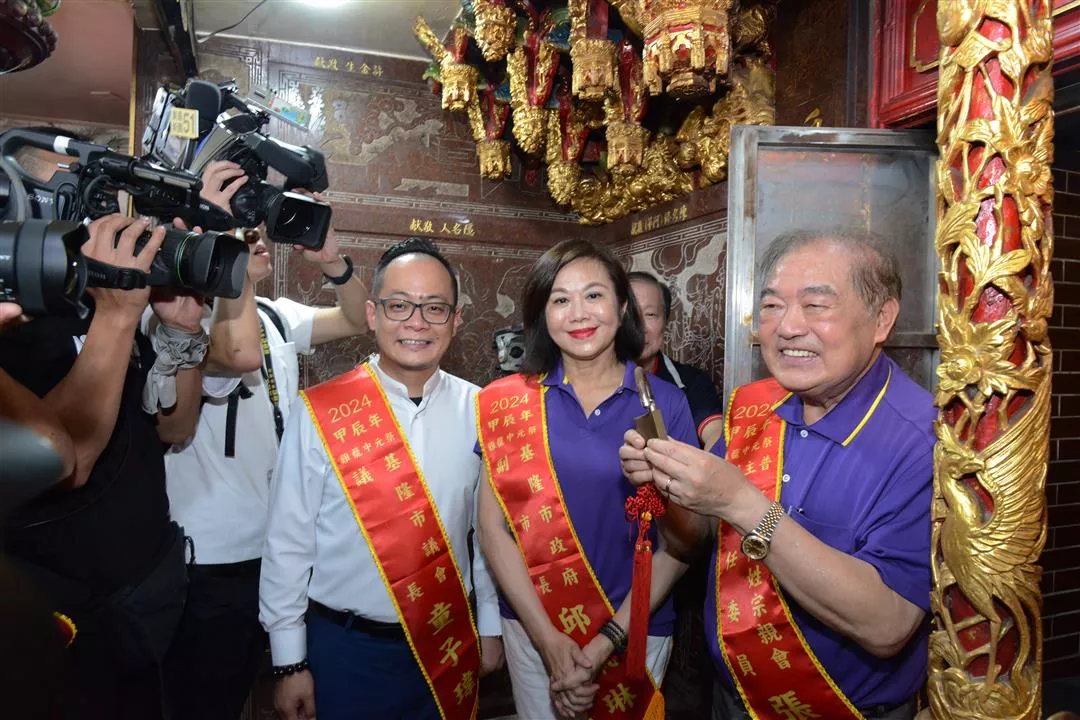
By using the term “shrine door” rather than the usual “gate to the Underworld,” the people of Keelung show their consideration for those buried at Laodagong Temple. (photo by Zhang Jinchao, courtesy of Zhang, Liao, and Jian Clan Association)
The origins of the Ghost Festival
The Ghost Festival lasts for the entire seventh month of the lunar calendar, which is commonly known as “Ghost Month.” Each year at this time the gates to the Underworld are thrown open to enable dead souls to return to the mundane world for “summer vacation.” In hopes of maintaining tranquility in their lives and preventing mischief by these spirits, ordinary believers bestow rich offerings and large amounts of “ghost money” on them as sacrifices.
It should be noted that there is much greater diversity among the ghosts in Keelung City than in other localities in Taiwan.
Keelung City is an important natural harbor in Northern Taiwan, where mining for gold, coal, and copper once flourished. At one time in its development, Keelung was comparable to Tainan in importance. Also, because of its geographic location, it was known as the “gateway to the north” and was of vital strategic military importance to everyone from the original settlers—the Basay (or Basai) indigenous people (a branch of the Ketagalan)—to the French, Spanish, Dutch, Japanese and Han Chinese.
In wartime, the winners survive while the losers die. There are a number of final resting places in Keelung for both locals and outsiders, including the Sino‡French War Memorial Park, where French soldiers who died in the Sino‡French War of 1884‡1885 were buried; the memorial tablet for Japanese soldiers who died in the First Sino‡Japanese War (1894‡1895) and whose cremated remains were buried in Keelung; Wanshan Temple (also known as Jinhuanyi Temple); Wushirengong Temple; and Sanxinggong Temple (considered to be the temple with the greatest diversity of bodies buried there).
Yu Shu-chun, a member of the Keelung City Intangible Cultural Heritage Review Committee, notes that most scholars agree that the origins of activities to make offerings to these homeless souls—i.e., the starting point of the Keelung Ghost Festival—can be traced back to 1853 and conflicts between immigrants to Taiwan originating from the Zhangzhou and Quanzhou regions of China’s Fujian Province.
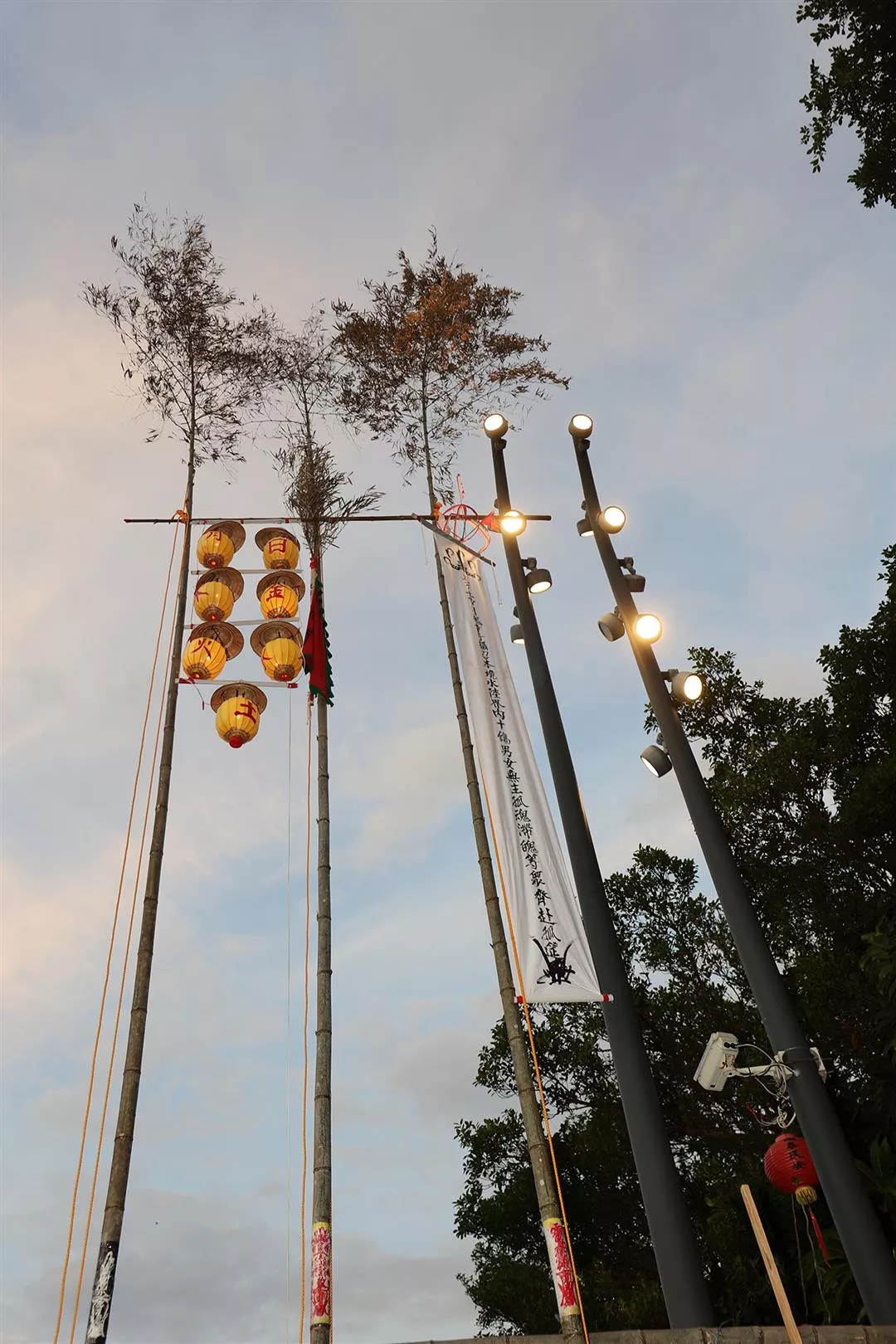
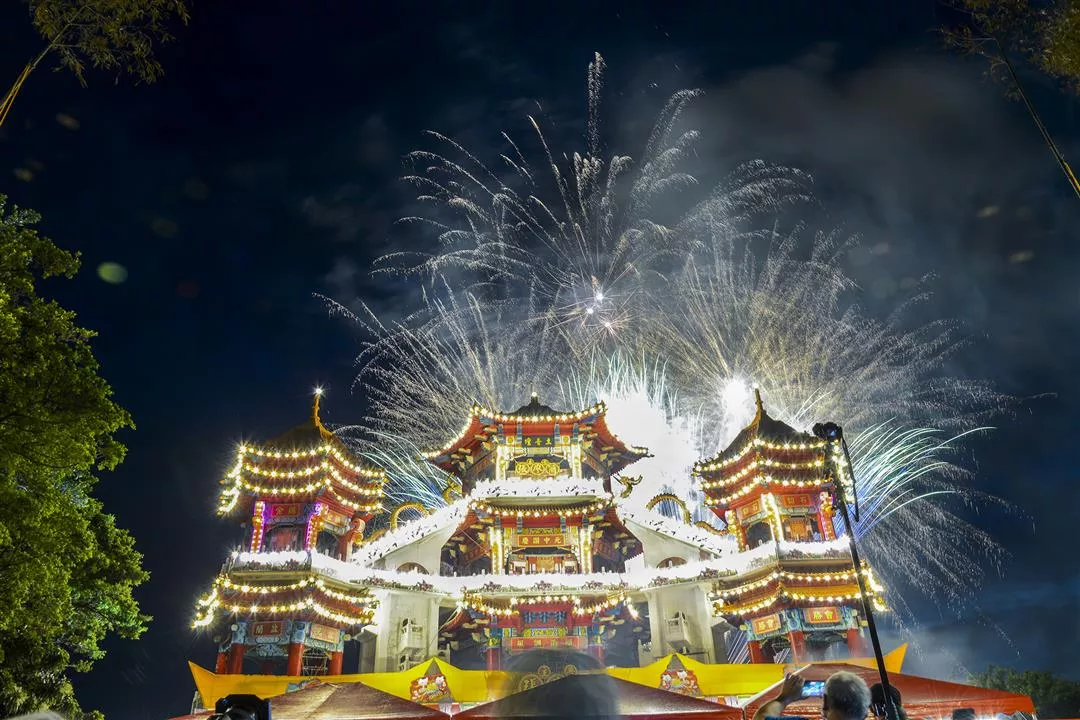
After the lights are turned on, the main salvation altar becomes Keelung’s most brightly lit landmark. (photo by Zhang Jinchao, courtesy of Zhang, Liao, and Jian Clan Association)
An inheritance from clan associations
Back in the day there was continual friction over territory between people from Zhangzhou and those from Quanzhou, with the worst fighting occurring in 1853, when 108 people died. Later these people were buried together and the Laodagong Temple was dedicated to them. This conflict brought great changes to society in Keelung, as people decided to go with “competition between performance troupes, rather than bashing heads.” Residents began to form surname-based clan associations, and in 1855, 11 such groups began to take turns organizing Ghost Festival activities.
Later, as people of other surnames joined in, the number of associations taking part grew to 15. Elderly Keelung residents can still sing the “clans song” listing the various surnames, and they can still clearly describe each point in time in the transition from “Zhang at the beginning and Xu at the end” to “Zhang at the beginning and Guo at the end.” This indicates the long history and powerful local cohesiveness of these organizations.
Yu Shu-chun suggests that it is the hard work put in by clan associations over many years that has been a key factor enabling the Keelung Midsummer Ghost Festival to run uninterrupted for 170 years, and why they have been able to fully preserve the traditional rituals. These include actions from “opening the shrine door,” “erecting the bamboo poles,” and “lighting the altar lamps to illuminate the road to salvation,” to “welcoming the dipper lanterns,” the “water lantern parade and release ceremony,” the “Pudu ceremony” (a.k.a. “crossing over,” “deliverance,” or “salvation ceremony”) and “closing the shrine door.”
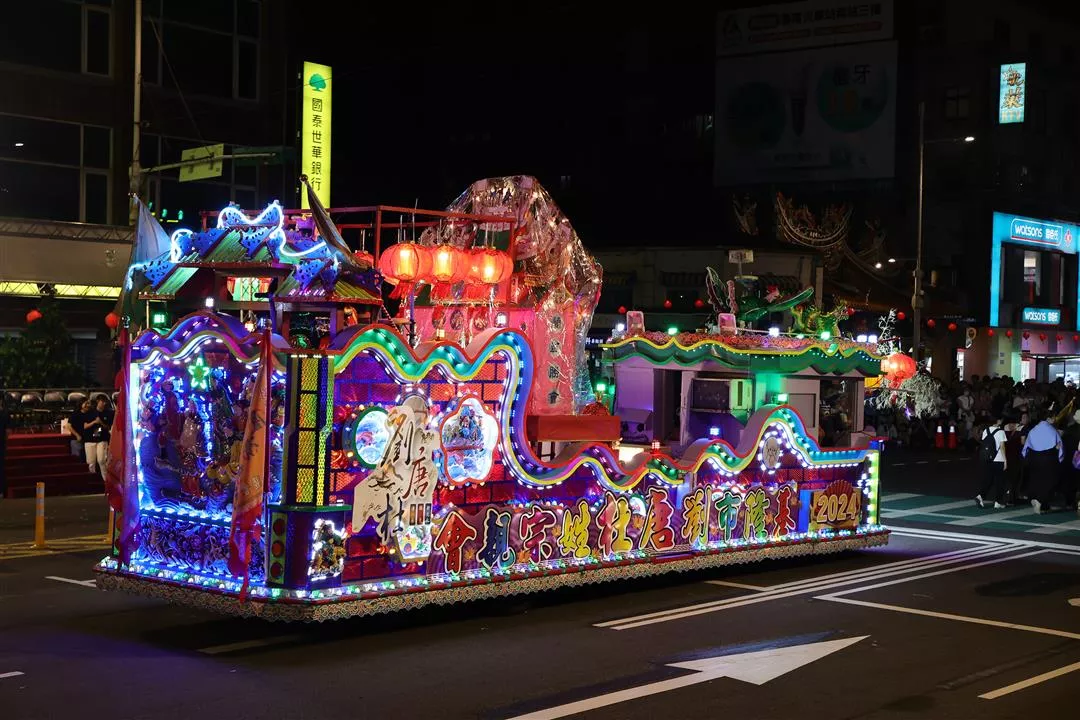
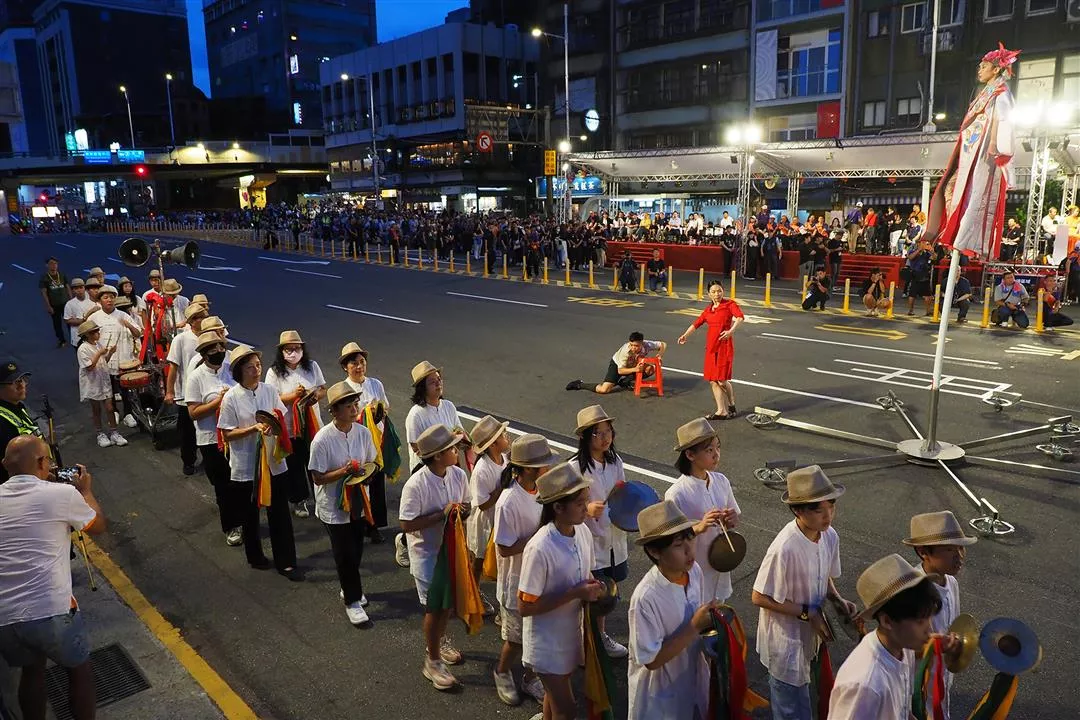
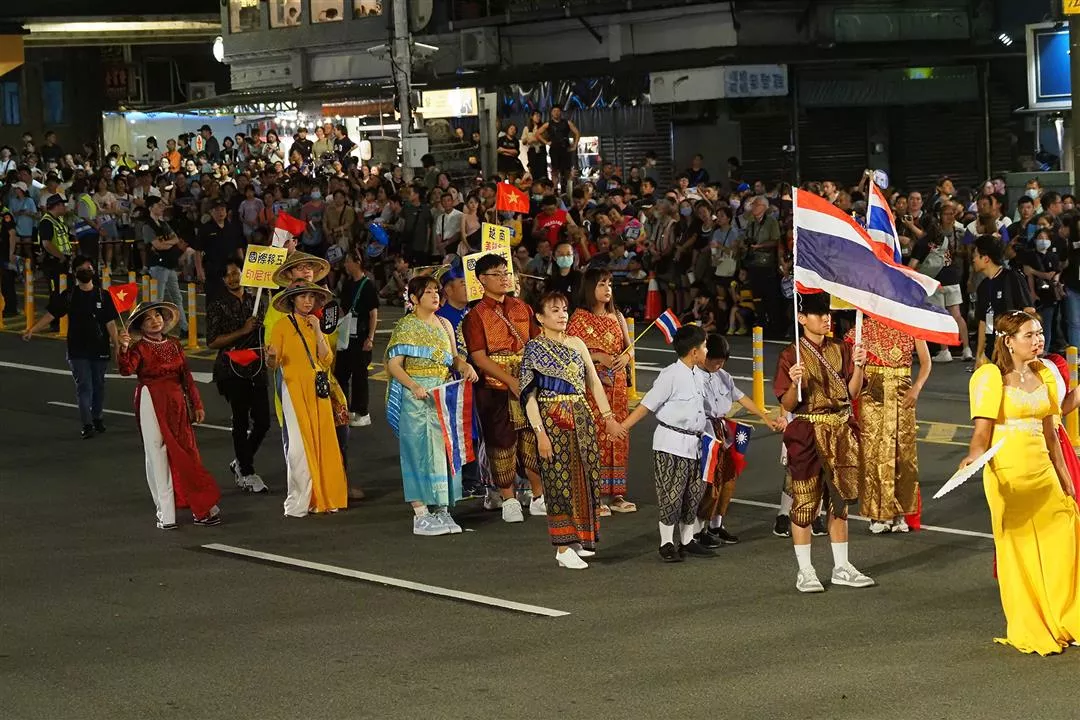
The water lantern parade is the main event at the Keelung Midsummer Ghost Festival.
Midsummer gloom?
The water lantern procession, always held in the evening of the 14th day of the seventh lunar month, is part of the collective memories of Keelung people. Whether it be the clan associations vying to display the best lanterns or the exciting performances by local or school groups, all add an element of enthusiasm to the Keelung Ghost Festival that other localities can rarely match.
The great majority of Taiwanese respect the Ghost Month taboos of not leaving one’s clothes out to dry overnight, not moving house, and not turning one’s head when tapped on the shoulder. This demonstrates the fear that Han Chinese feel for lonely wandering ghosts.
Nonetheless, the origins of the Midsummer Ghost Festival are not entirely baleful. From a religious perspective, says Yu Shu-chun, the Daoist Zhongyuan Festival (the 15th of the seventh month) is actually the birthday of the Lord Emperor of the Earthly Realm, when people are absolved of their sins. Most people get up early on that day to wish the deity long life, and to plead for amnesty for the lonely ghosts suffering in hell, for them to be allowed out to partake of the offerings presented for them.
In Buddhism, the Midsummer Festival is a time of commemoration and gratitude. It is said in the Buddhist legend of Maudgalyayana, who went into hell to rescue his mother, that he followed the Buddha’s instructions and on the 15th day of the seventh lunar month presented offerings to monks, asking them to perform rituals to transform the items for the benefit of suffering souls, to mitigate their anguish and help them be reincarnated. Buddhists call this festival Yulanpen or Ullambana.
With the coexistence of Daoism and Buddhism in Taiwan, the blending of notions of hell from the two faiths gave rise to a popular concern for the fate of people who must atone in hell for violations of ethical codes. Moreover, the Zuo Zhuan (Commentary of Zuo on the Spring and Autumn Annals) states that “if ghosts have a place to return to, they won’t do bad things,” which explains the commonly held impression that ordinary people have of the trouble that homeless lonely ghosts could cause in the mundane world. Through the concatenation of various elements, one can understand how the Midsummer Ghost Festival has continued to the present day, and how the good treatment that Taiwanese show to ghosts—based on the belief that one can only preserve tranquility by making abundant offerings—has become a unique aspect of culture in Taiwan.
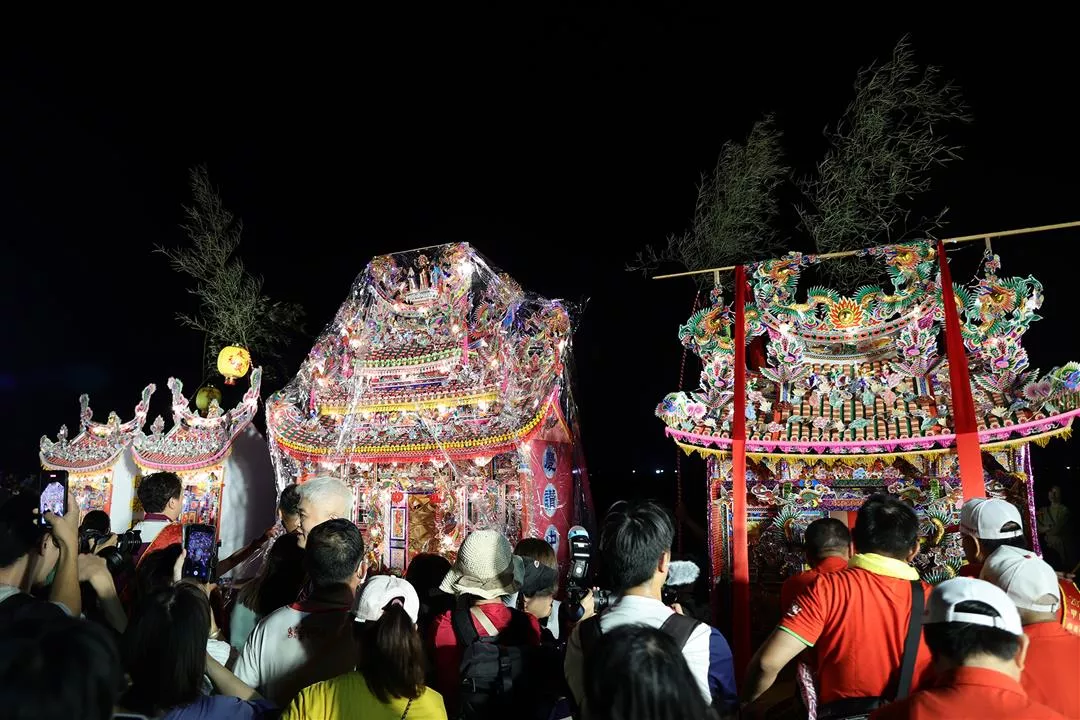
Before the water lanterns of the various clan associations are released onto the sea, they are first filled with “gold paper” and rituals are performed including “changing clothes” and “presenting incense to seal the doors.”
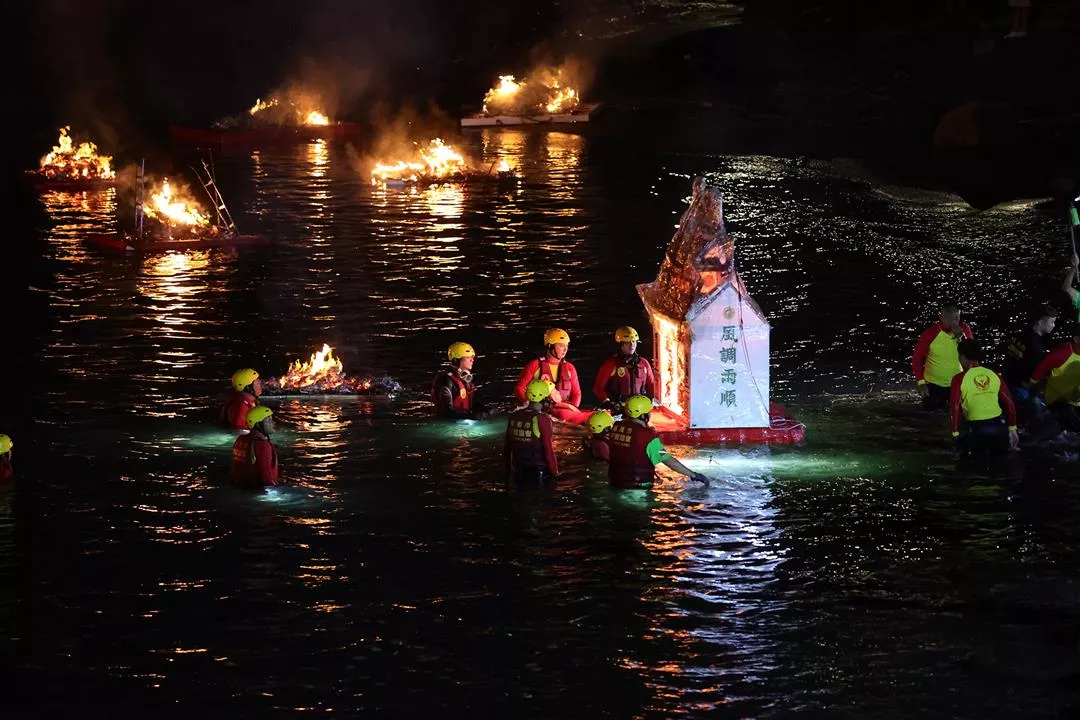
In days gone by, water lanterns were released onto the sea on the 24th day of the seventh lunar month, but due to postwar austerity measures adopted by the government, the date was brought forward to the 14th.
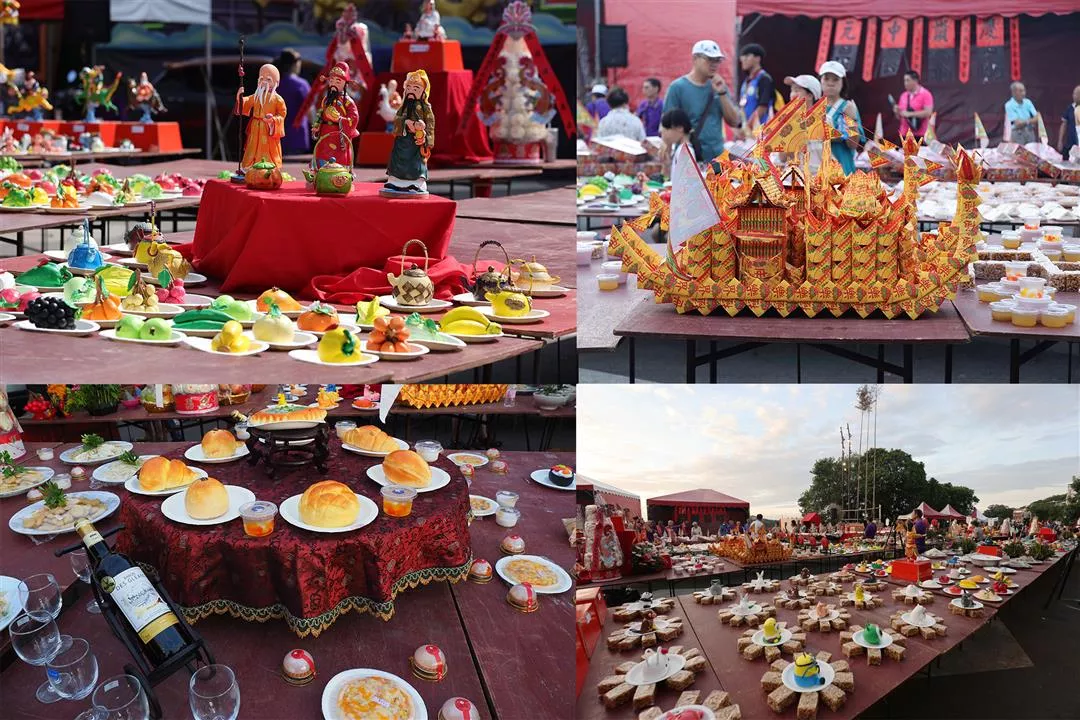
The feast for the Pudu ceremony at the main altar, known as the “free-spending banquet” for its opulence, is an elaborate and dazzling affair.
Compassion and concern
In Keelung, not only can the “Good Brothers” eat very well, they also have strong feelings of “gratitude.”
After the gate to the Underworld is opened, bamboo poles are erected on the 11th day of the lunar month. By day, daytime lanterns are hung on the poles as an invitation to the deities. At six each evening, they are changed to night lanterns to guide Good Brothers from both water and land to the main salvation altar for the Pudu ceremony. On the 14th day, after the water lantern parade, the water lanterns are brought to the harbor and released, sending out an invitation to all ghosts at sea.
The water lanterns, made of paper stretched over wood or bamboo frames, are like “waterborne hotels” three or five rooms wide. Inside are bundles of “gold paper” (a.k.a. joss paper) printed with images of clothing (such as coats, pants, skirts, shoes, and socks), toiletry items (such as combs and scissors), and other products for daily use. When these are burned, the images are transmuted into items that spirits can use in the afterlife. These enable water ghosts to have a change of clothes, freshen up and make themselves presentable to go onshore for the Pudu ceremony.
These rectangular pieces of “gold paper” are burned before the Pudu ceremony as invitations. It is essential that the number of offerings is the same as the number of invitations, to avoid hosting more wandering ghosts than there is enough food for. However, the clan associations also believe that the farther their water lanterns float from shore, the more good fortune clan members will have during the coming year, because the lanterns will attract more ghosts. This is good because, as Yu Shu-chun explains, “All favors must be repaid.”
On the 15th day of the seventh month, five long tables are set up in front of the main salvation altar. The two at the sides are funded by associations that are not in charge for the given year, while the middle three are organized by the clan association in charge. These three tables are used to serve meat dishes, vegetarian dishes, and Western-style foods, respectively. The tables are set in a meticulous and sumptious manner, which is why this event is also known by the laudatory name “golden pine banquet” (jinsongyan), a pun on “free-spending banquet.”
At the head of each table, utensils such as washbasins and towels are set out for spirits to wash up before dining. Next there are the “five fruits,” “12 vegetable bowls,” “five animal sacrifices,” “Han food bowls,” and more, giving the Good Brothers the chance to really chow down. After eating and drinking their fill, there are also a variety of sculptures of living things made using food products, with the lifelike forms giving the impression of a grand theater production. Finally, there are late-night snacks including “nine-dragon dishes” and “fruit baskets.” Besides the offerings on the tables, sesame-oil chicken soup is placed under one table as an offering to women who have died in childbirth, echoing postpartum dietary practices.
Good Brothers from other lands who are unaccustomed to eating Asian cuisine can get what they want from the table of Western-style dishes, including steak, red wine, coffee, and Western-style cakes, as well as sashimi, miso soup, and gunkan maki sushi. Thoughtfully, knives and forks are also set out for these foreign guests.
After the meal there are paper buildings for washing up after eating; the Hanlin Academy, where the spirits of gentry, scholars, officials, and military personnel can take shelter; and separate men’s and women’s “same destination buildings” for ordinary ghosts. Meanwhile, the papers printed with images of useful items for the afterlife that are burned during the ritual enable the ghosts to return home with souvenirs.
“No matter if you are a local ghost or a foreign ghost, a young ghost or an old ghost, if you come to Keelung we will treat you all equally with our offerings.” This remark by Yu Shu-chun expresses the core value of the Keelung Midsummer Ghost Festival: compassion.
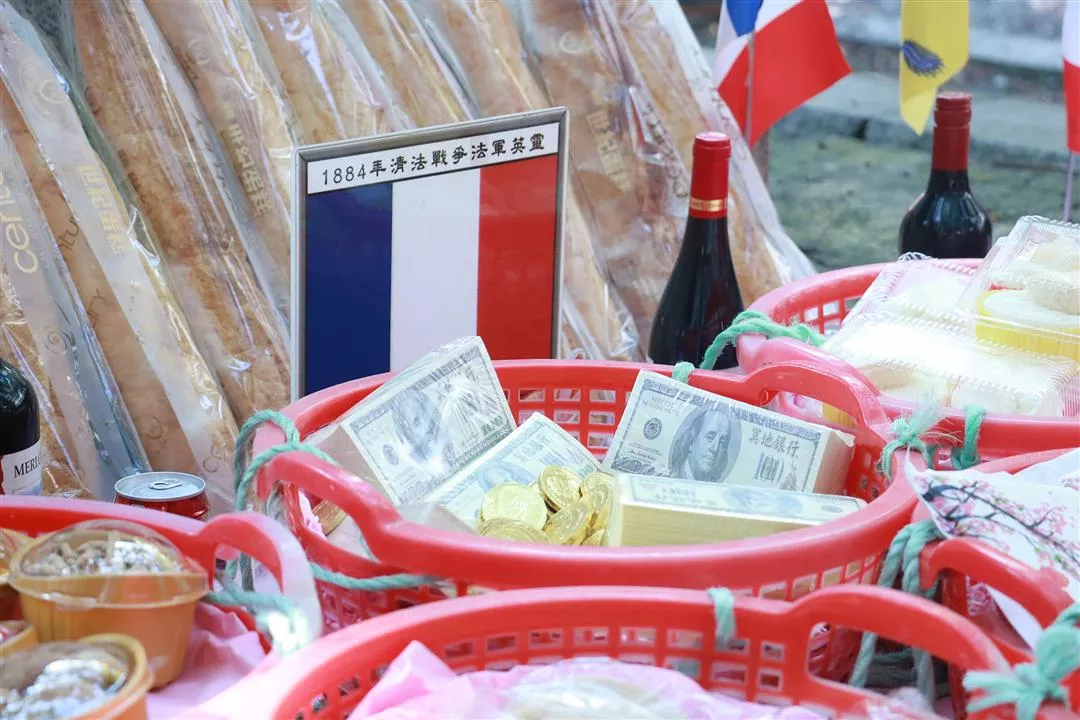
photo by Cindy Li
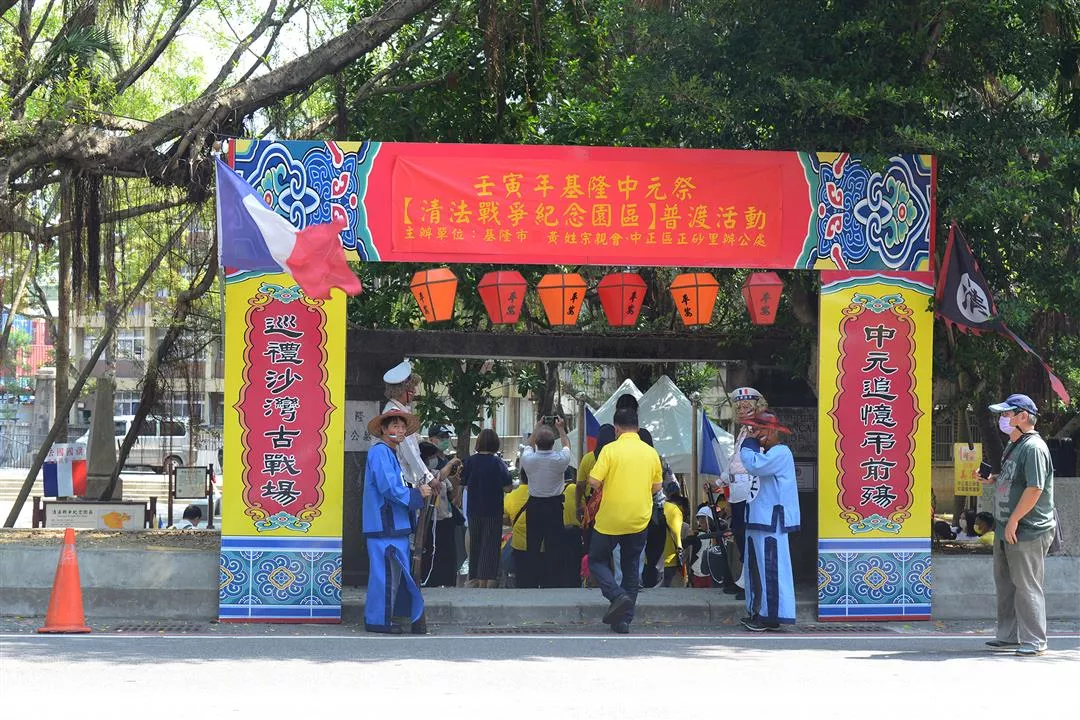
The welcoming of guests to the Sino–French War Memorial Park by actors dressed in Qing-Dynasty garb and old French military attire is a unique feature of the annual Pudu activities at the venue. The photo was taken at the 2022 Pudu ceremony at the park. (Zhang Jinchao, courtesy of Zhang, Liao, and Jian Clan Association)
Rituals at the Sino–French War Memorial Park
Each year the clan association in charge of that year’s Ghost Festival works with the French Office in Taipei and the ward chief and residents of Zhengsha Ward in Keelung to prepare fresh flowers and Chinese and Western-style foods including fruit and meat dishes, French bread, red wine, and whiskey, as well as papercraft warships, for the Pudu ceremony for the more than 700 French military personnel who were buried in Keelung. 2024 marks the 140th anniversary of the Sino–French War, so the Keelung City Government has specially arranged for a series of arts activities and exhibitions lasting several months. While highlighting the historic importance of the cemetery, these events will also add a note of peace and amity to relations between Taiwan and France.
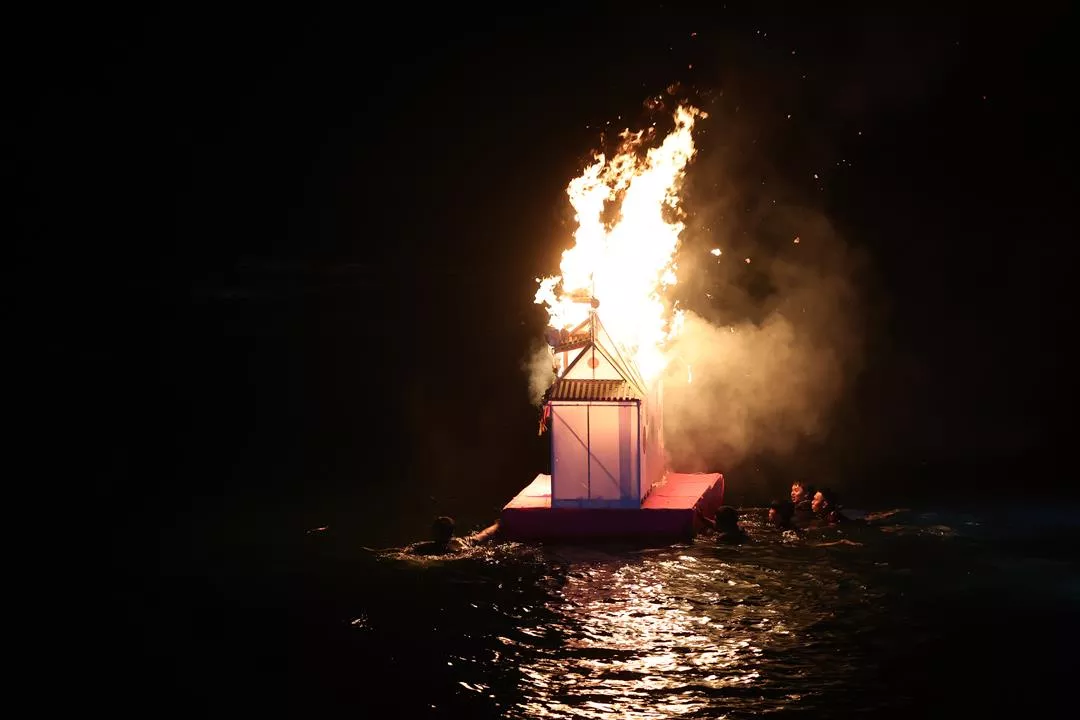




@List.jpg?w=522&h=410&mode=crop&format=webp&quality=80)


